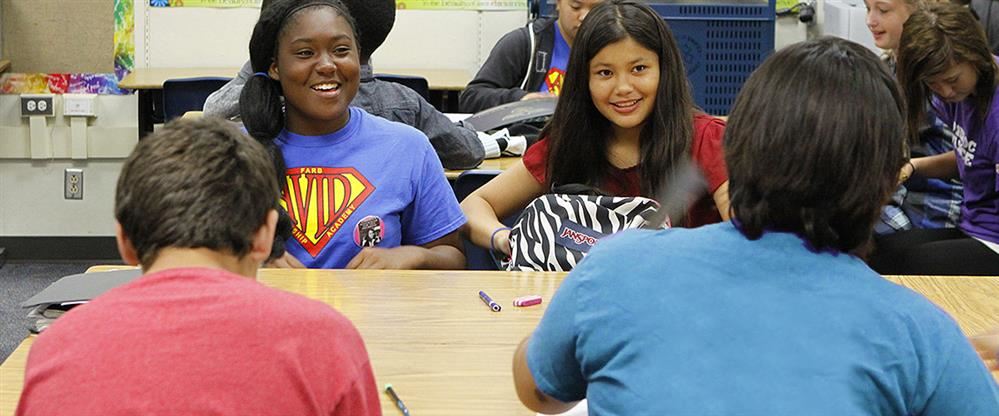AVID Encourages All Learners
A friend of mine has a 12-year-old who’s a bright kid, but highly disorganized. He doesn’t write down assignments, doesn’t know when things are due and not quite sure what he needs to do. The older he gets the more it’s bothering him, the more he knows it’s holding him back. But he and mom aren’t sure what to do.
In sixth grade, there was a presentation for students about a class, AVID. They could take it in middle school but would have to give up an elective; art, music, theater or foreign language. Students had to talk it over with their parents and apply to be in the program. He was interested, more than interested. He applied and started AVID in seventh grade. His mom was excited he showed such interest in a class about college and career readiness, organization and study skills. It’s been 7 months now and AVID is still his favorite class.
As my friend told me her story, I was stunned and delighted at the same time. This is exactly the kind of class visual kids need! They’re smart. They can do the work, but as visual learners in a left-brain education system many of them are under performing. This class would provide the help and encouragement visual kids need. I was also surprised our district had implemented this type of program. We’re the second largest district in our state, not known for high achievement across the board. It means so much that the district is being proactive, seeing the kids that can achieve and getting them the extra help, especially this kind of help.
 AVID, Advancement Via Individual Determination, was created in 1980 by a teacher who recognized a need to change the way teachers approach the student body to prepare them for four-year college entry. AVID is meant for students in the academic middle – B, C, and even D students – who have the desire to go to college and the willingness to work hard. These students are capable of completing rigorous curriculum but are falling short of their potential. (They’re describing visual learners!!) While many of these students go on to graduate from high school, since they haven’t been pushed academically, they are often not ready for the rigorous coursework that college requires.
AVID, Advancement Via Individual Determination, was created in 1980 by a teacher who recognized a need to change the way teachers approach the student body to prepare them for four-year college entry. AVID is meant for students in the academic middle – B, C, and even D students – who have the desire to go to college and the willingness to work hard. These students are capable of completing rigorous curriculum but are falling short of their potential. (They’re describing visual learners!!) While many of these students go on to graduate from high school, since they haven’t been pushed academically, they are often not ready for the rigorous coursework that college requires.
A key part of the AVID system that our visual learners would benefit from, is the instructional strategies used to develop organizational skills and promote academic self-management. AVID teaches Cornell note taking, a visual method of note taking that is recommended for visual kids. Cornell note taking involves dividing a piece of paper into 3 sections; one for taking notes in class, one for reviewing the notes and recording key words and ideas, and the last section for summarizing what was taught. Notes formatted this way make study time much less overwhelming and more efficient. It turns out the whole school is using Cornell note taking, making for great consistency across the board.
AVID students carry one large binder, with sections for each subject. The AVID instructor reviews the content, assignments, homework and level of organization. That was always my job as a mom!!! It still would be to some extent, but can you imagine someone else watching and holding your child accountable! I’m feeling some relief already. AVID instructors also review larger projects with students. They help map out the needed steps, help determine due dates for each step, and check on progress. I’m sure thoroughness varies teacher to teacher, but wow, this is exactly what these kids need. They’ve got the brains. They know a lot. They just need help getting what they know on paper.
How do you get your visual learner, or underachiever in an AVID class? First, find out if your school district has the AVID program, or something like it. Is it just in 7th and 8th grade or have they expanded it? In our district, some 6th grade teachers are voluntarily being trained in Cornell notes and key parts of the AVID program. They want their students to get started on it in 6th grade, so they move into 7th with ease. And it extends through high school as well. I love this kind of commitment!
A few more thoughts:
- If the program is available, apply.
- If not, be part of getting it.
- Read up on what and how they do things to see what you can do at home.
- Get excited this kind of help is happening for kids.
Does your school district have an AVID program or something like it? Do you have any thoughts on it? Let me know in the comments below.










